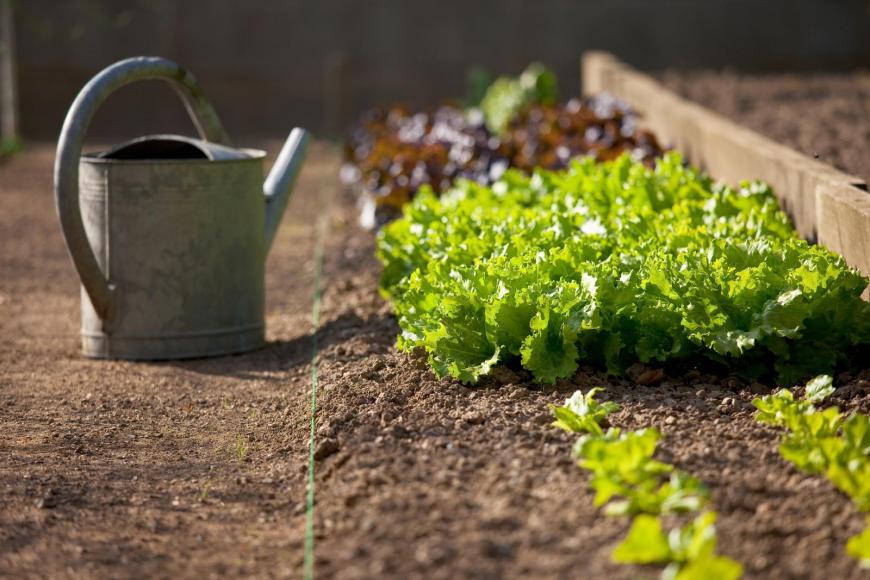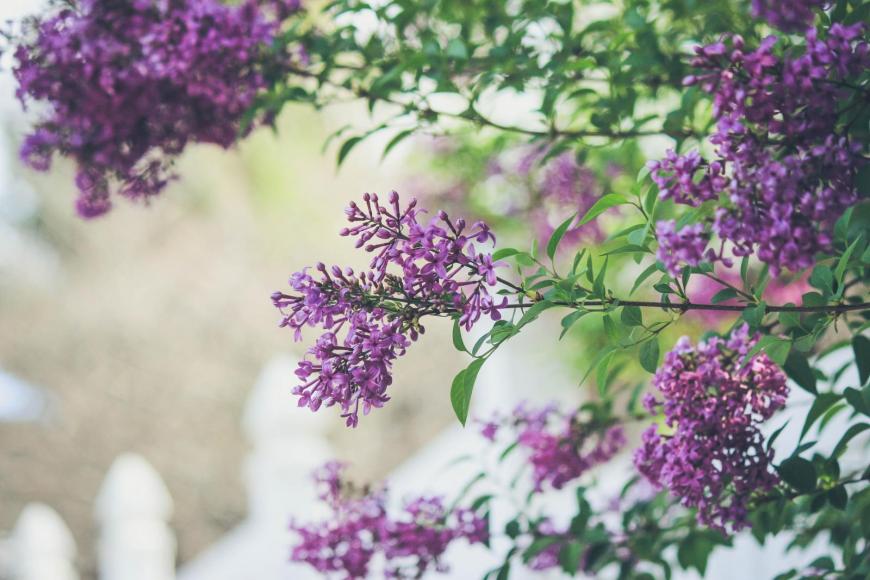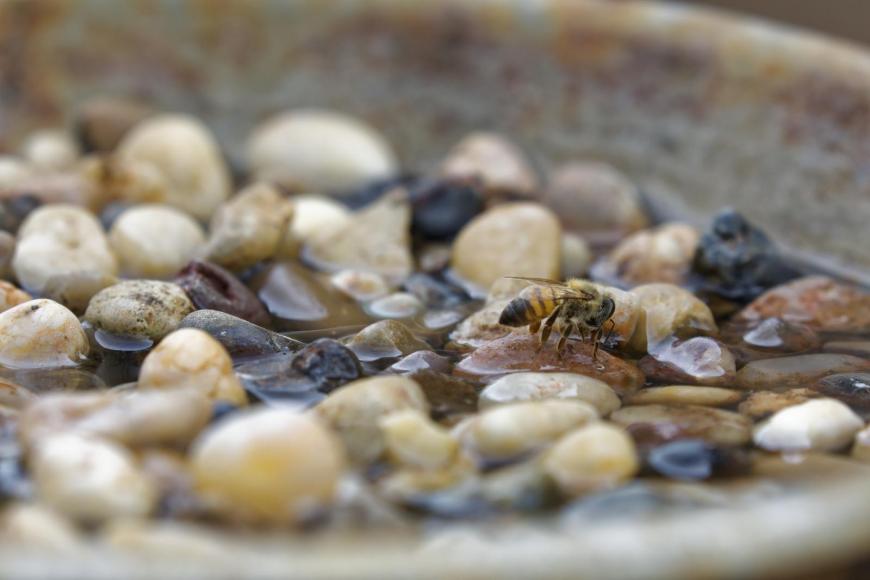
Meteorological summer begins on June 1st and it’s ‘all systems go’ in the garden. After the recent rains and a few days of sunshine, the garden is now a riot of colour and growth and there are plenty of jobs to keep gardeners busy this month.
Wherever you are in the country, June is the month to throw everything in the ground before the weather gets too hot. Tender annuals including beans, pumpkins, tomatoes, squashes and sweetcorn can all be planted out now. There’s also plenty to start harvesting this month, including strawberries, salads, peas, radishes and early potatoes.
Don’t worry if you haven't done much yet, there’s still time to get started. Have a look to see if you have any plant sales happening locally - lots of people sell or give away their spare seedlings this month. And there are also plenty of annual vegetable seeds that you can sow outside in June, ready for harvesting later in the year.
Continue sowing beetroot, carrots, peas and leafy greens. It’s a good idea to sow some seeds at the beginning of the month and some at the end so that you’ll have a staggered harvest later in the season rather than having to harvest everything in one go. Beans, courgettes, pumpkins and squashes can all be sown directly outside now. Sow two seeds together and remove the weaker seedling.

Continue with the successional sowing of salads outside. Sow more lettuce, rocket, land cress, summer purslane, and corn salad to ensure a steady supply of salad greens. And there is still plenty of time to sow and grow herbs including basil, coriander, chervil, dill, lovage, parsley, summer savoury, and winter savoury.
With the arrival of warmer temperatures, it’s time to get remaining plants hardened-off and planted out into the garden. After a cold April and cool, wet May, the growing season is a bit behind normal this year. You might have found that your indoor-raised seedlings as well as any vegetables sown outdoors have been a bit slow to get going due to the lower temperatures but they are likely romping away now that we have some sunshine! If you haven’t planted your tomatoes out yet, they can be planted out now to a sunny, sheltered spot, ideally against a south-facing wall. Leaving a slight depression in the soil around the base of plants will help water to flow down to the roots. Tomatoes are hungry plants and it’s a good idea to feed them regularly with a high potash fertiliser, especially if growing in bags or pots. A liquid fertiliser made from comfrey leaves is excellent. Pots and grow bags will also need extra watering as they tend to dry out quickly.
During hot, dry spells, keeping on top of the watering can be a challenge. It’s a good idea to concentrate on plants that need it the most, namely young vegetables and plants in containers which will need daily watering when it’s hot. And never underestimate the power of mulch! It’s an effective way to reduce water loss and it’s also good for suppressing weeds. You can use straw, grass clippings (as long as they’re not laid too thickly), rotted bark chips or compost. Make sure you give the soil a thorough soaking before laying the mulch, so that moisture is locked into and not out of the soil.

June and July are also the months to increase your plant stocks for free. Try taking some herb cuttings such as marjoram, lavender, rosemary, sage and thyme and plant them in some gritty compost on a sunny window sill. Other plants for softwood cuttings include buddleia, fuchsia, lavender and viburnum.
There’s plenty of weeding to do at this time of year to keep weeds from competing with your plants for light, nutrients and water. Hoeing down annual weeds when the weather is dry or hand-pulling them when they are still small will save work later in the summer. On dry days, you can leave weeds on the surface of the soil where they will wither in the sun. Perennial weeds like bindweed, burdock and ground elder will need to be dug out completely, being careful to remove all of the roots. Bindweed, that attractive and indestructible twiner, will easily regrow from any fragments of white rhizomes left in the soil, so be sure to remove the roots as carefully as you can. They are quite fragile and break easily, so avoid inadvertently chopping them up or you’ll help propagate hundreds of new plants! Submerge perennial weeds in a bucket of water for a few weeks to kill the roots, before adding the sludge to your compost heap.
Remove the fading blooms from camellias, lilacs and rhododendrons. Removing the blooms diverts the plant’s energy away from producing seeds and towards building up buds for next year's flowers. Take care when removing the old flowerheads from rhododendrons and camellias as the new shoots develop immediately under the spent flowers. With lilacs, cut back the flowering stem to just above a pair of leaves of buds, or even to small shoots further down the stem.

Continue to plant out summer-flowering bulbs. Cannas and lilies can now be planted out into the borders. You can also simply place whole pots of summer-flowering bulbs into the border, either sinking them into the ground or setting them on the soil surface. If unburied, they’ll need a lot more watering.
If you took part in this year’s No Mow May, perhaps you’ve been inspired to leave an area of grass unmown until the autumn. You don’t have to leave your whole lawn to grow wild (but it’s great for wildlife if you do!). You might just want to leave an area of it uncut and enjoy a continued show of wildflowers. Why not get creative and mow some interestingly shaped pathways through the long grass.
With warmer weather upon us, it’s important to keep fresh water topped up for birds and other garden wildlife. Adding a few pebbles to your birdbath will give bees and other pollinators a landing pad so that they can have a drink too.

Keep ponds topped up if necessary. It’s best not to disturb a wildlife pond too much at this time of year but do carefully remove dead and decaying leaves to discourage algae. It’s also a good time to add some new floating plants such as frogbit (Hydrocharis morsus-ranae) and water soldiers (Stratiotes aloides). Aim to cover 2/3rds of the pond’s surface to help keep algae at bay. It’s also important to grow plants around the pond’s edge to provide a safe hiding place for frogs, newts and toads. Choose native marginal plants such as marsh marigold, water plantain and water forget-me-nots.
Did you take part in Plantlife’s “Every Flower Counts” survey? If you did and have submitted your results, you will have received your own Personal Nectar Score letting you know how many bees your lawn can support. And if you’re inspired to grow more food for bees, have a look at our article full of ideas for creating a bee-friendly garden.
Loading recent activity...